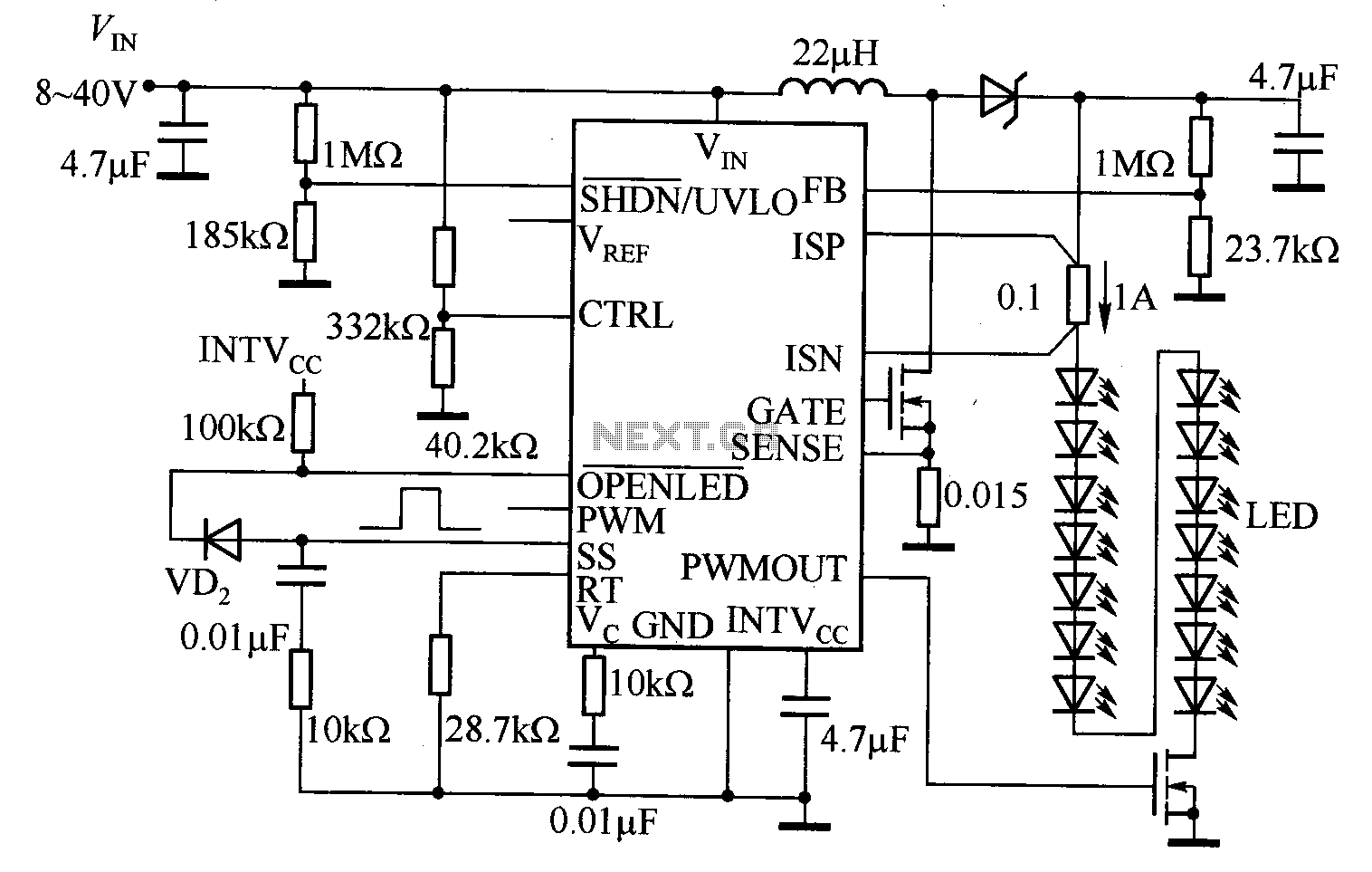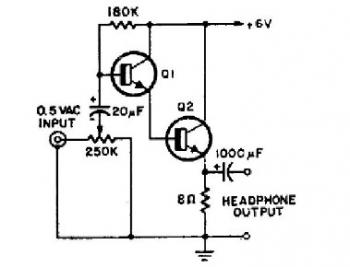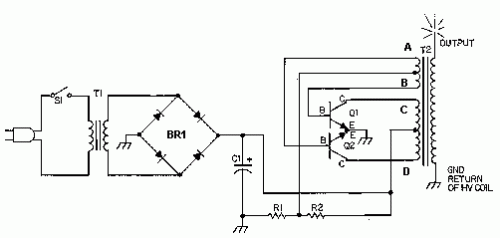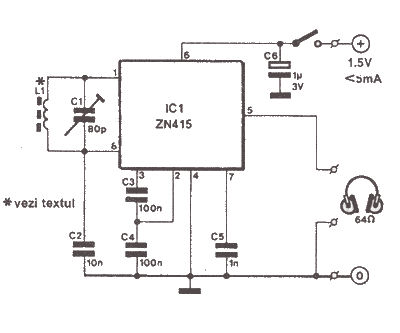
Moving Coil Head Pre-preamplifier
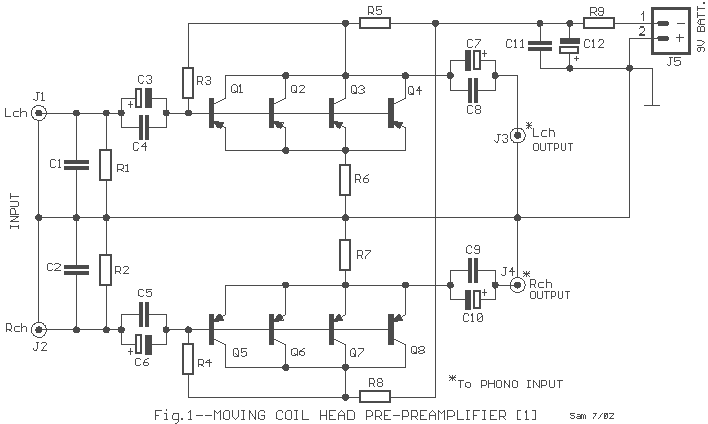
The description pertains to a specific type of preamplifiers that are designed to amplify the low output of Moving coil heads, enabling their drive to an input PHONO [RIAA] of a preamplifier. Moving coil heads present certain challenges that require careful consideration during the design of the amplifier. These challenges include the very low output level of the head and the low output resistance, necessitating an amplifier with excellent noise behavior.
In the circuit, instead of one transistor, four transistors are connected in parallel. This arrangement is designed to distribute the thermal noise of the transistors by a factor of four. The circuit employs a specific type of transistor, BCY71, known for its very low noise characteristics.
Resistors R1 and R2 are included in the circuit to ensure the correct adaptation with the head. These resistors can be replaced with others of different values to suit the specific head that will be used.
The circuit is powered by a 9V battery. A filter, composed of R9 and C12, is used to provide a clean power supply, free of noise. This ensures that the circuit operates effectively, without interference from power supply noise.
In summary, this circuit description provides a detailed overview of a preamplifier designed specifically for Moving coil heads. It highlights the unique challenges associated with this type of application, as well as the specific design choices made to address these challenges. This includes the use of multiple transistors in parallel, a specific low-noise transistor type, and a carefully designed power supply filtering system.A special category of preamplifiers, they are the preamplifiers that undertake they amplification the low exit of Moving coil head, so that its drive to a input PHONO [RIAA] of preamplifier. With the moving coil heads, exist certain problems which it should we are careful in the designing of amplifier.
The very low output level of head and the low output resistance, require a amplifier with very good behavior in the noise. In the circuit in order to we achieve, exist instead one transistor, four transistors connected parallel.
This ensure the thermic noise distribution of transistors via four. In the circuit is used a type transistor [ BCY71 ], that it has very low noise characteristically. Resistors R1 and R2, ensure in the right adaptation with the head and it can be changed with other value so that it suits with the head, that we will use. For the circuit supply are used a 9V battery and a filter constituted from R9, C12, are ensured thus ` clean supply, exempted from noise.
🔗 External reference
In the circuit, instead of one transistor, four transistors are connected in parallel. This arrangement is designed to distribute the thermal noise of the transistors by a factor of four. The circuit employs a specific type of transistor, BCY71, known for its very low noise characteristics.
Resistors R1 and R2 are included in the circuit to ensure the correct adaptation with the head. These resistors can be replaced with others of different values to suit the specific head that will be used.
The circuit is powered by a 9V battery. A filter, composed of R9 and C12, is used to provide a clean power supply, free of noise. This ensures that the circuit operates effectively, without interference from power supply noise.
In summary, this circuit description provides a detailed overview of a preamplifier designed specifically for Moving coil heads. It highlights the unique challenges associated with this type of application, as well as the specific design choices made to address these challenges. This includes the use of multiple transistors in parallel, a specific low-noise transistor type, and a carefully designed power supply filtering system.A special category of preamplifiers, they are the preamplifiers that undertake they amplification the low exit of Moving coil head, so that its drive to a input PHONO [RIAA] of preamplifier. With the moving coil heads, exist certain problems which it should we are careful in the designing of amplifier.
The very low output level of head and the low output resistance, require a amplifier with very good behavior in the noise. In the circuit in order to we achieve, exist instead one transistor, four transistors connected parallel.
This ensure the thermic noise distribution of transistors via four. In the circuit is used a type transistor [ BCY71 ], that it has very low noise characteristically. Resistors R1 and R2, ensure in the right adaptation with the head and it can be changed with other value so that it suits with the head, that we will use. For the circuit supply are used a 9V battery and a filter constituted from R9, C12, are ensured thus ` clean supply, exempted from noise.
🔗 External reference
